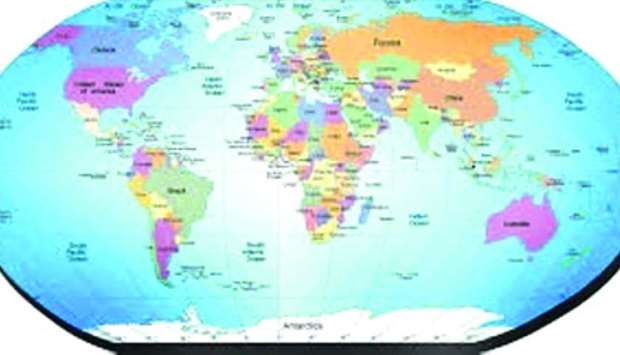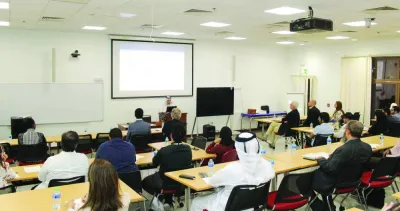*9/11 triggered the 'war on terror' but radical groups are still on the rise
September 11, 2001 was an unprecedented seismic event in modern politics of our times which sparked yet another generational conflict after the Soviet era.
Only this time it was against an unknown, unidentified, stateless enemy.
Just as difficult to explain the days of non-smart phones, absence of Wi-Fi and simpler airport procedures, it's difficult to tell young people these days that we live in a post-9/11 world.
A place where the US vs THEM narrative is no longer weak and in the shadows.
British author Jason Burke in his 2011 book The 9/11 Wars writes that around 1,000 English-language books with the word ‘terrorism’ in their titles existed in 1995, in ten years that number multiplied nearly 11 times.
Burke argues that the reduced emphasis on nations as sponsors of terrorism was replaced with a new focus on non-state groups (who were many times portrayed as a monolith, united, multi-headed monstrosity). "Islam" became a hot issue, "Islamic militancy" nom de guerre of non-conventional guerrilla warfare and terms like "Islamists" were conjoined with terrorists rather than scholars.
Violence has become more widespread and has had a profound impact on society, economics, politics and even religions.
Since 2001 Muslim majority countries have faced more incidents of terrorism.
About 94% of all terrorism-related deaths happened in the Middle East and North Africa, sub-Saharan Africa, and South Asia.
In 2016 nearly 26,000 people were killed in terrorist attacks, according to latest Global Terrorism Index by the Institute for Economics and Peace.
As wars and conflicts intensified, so did lawlessness and proliferation of radical armed groups.
But efforts to wage wars have been referred to as fighting fires with petrol.
The lack of a strategy or real efforts to address the underlying causes (including economic, political and ideological) has seen an exponential growth in the ability of hardline groups to recruit and expand.
Many emirs, commanders, leaders and heads of fighting gangs have been killed, yet their operations continue.
After the attack on New York’s World Trade Center, the United States (as the unofficial leader of the free world) took it upon itself to begin the so-called "war on terror".
Al Qaeda
Afghanistan has become the longest running US war with no near end or exit strategy in sight.
In less than a month after the twin tower attacks, on October 7, 2011 the US invaded Afghanistan.
It was the beginning of the "war on terror" which has seen US kill lists expand beyond countries and continents.
Al Qaeda began attacking US targets in the 1990s but the frequency, ferocity and locations multiplied after the US went to war with the group.
Al Qaeda originated on the Pakistan-Afghanistan border when Muslim fighters from across the globe flocked to fight alongside the then US-sponsored Afghan Mujahideen.
The men called to wage a holy war against the Soviet Union included Arab fighters such as Saudi-born Osama bin Laden, who later became the leader of Al Qaeda's pan-Islamic vision.
Its affiliates remain a potent threat from Syria's Al Nusra Front to Somalia's Al Shabab.
Here's a list of countries where Al Qaeda and its affiliates have a presence.
Afghanistan, Indonesia, Philippines, Pakistan, Saudi Arabia, Iraq, Syria, Yemen, Somalia, Kenya, Tanzania, Uganda, Libya, Niger, Mali, Mauritania, Morocco, Spain, France, UK, Belgium, Germany, Italy.
ISIL
On March 20, 2003 US forces invaded Iraq to get rid of "weapons of mass destruction" - the pretense for that war was later found to be faulty and based on sexed up intelligence reports.
Iraq was the next phase in the US war on terror and despite the toppling of the Saddam Hussain government the fighting intensified.
The leader of Al Qaeda's Iraq wing - Abu Musab al-Zarqawi soon became too violent for Al Qaeda itself.
His branch of Al Qaeda later morphed into Islamic State of Iraq and the Levant - commonly known as ISIL, ISIS or the Arabic acronym Daesh.
Since its onset, the group picked up fighters and Sunni military personnel from Saddam's army who were disbanded with the Iraqi army under a US directive.
Many of its later leadership (including its current supremo Abu Bakr al-Baghdadi) became hardened fighters under US-run torture sites such as the Abu Gharib prison.
ISIL declared its global intentions two years into the conflict in Syria.
Its ranks and strength were buoyed by the influx of foreign fighters and lack of international leadership in the wake of complex proxy wars from regional and international players inside Syria.
The highest number of deaths from ISIL attacks has been in Muslim majority countries.
Now its self-declared caliphate in Iraq and Syria has crumbled after a high humanitarian cost and its online recruitment campaigns have been largely diminished.
But its sleeper cells and operatives are believed to have spread out from the Middle East to Europe, Asia and Africa.
AQAP
War-torn Yemen's impoverished neighbourhoods have provided the perfect environment for another Al Qaeda offshoot to flourish.
Although Al Qaeda has been operating in Yemen since the 1990s, it wasn’t until 2009 when its Saudi and Yemeni franchises united to form Al Qaeda in the Arabian Peninsula or AQAP.
US support for the Yemeni leader (who was deposed during the Arab Spring protests) failed to wipe out Al Qaeda from Yemen.
US air strikes and drone attacks have continued to kill AQAP leaders but casualties have included US citizens, women and children.
The collateral damage has helped AQAP to recruit.
In the last few years a Saudi-led blockade and troops on the ground have pushed back AQAP into the desert and mountains of Yemen but its influence is far from over.
AQIM
This year marks the 10th anniversary of US Africa Command or AFRICOM which has as many as 7,200 US uniformed personnel, Department of Defence civilians, and contractors.
Across the North African desert region from Somalia in the east to Mauritania in the west, groups like Al Qaeda have taken advantage of the disenfranchised and impoverished local population.
In 2006 militant leaders pledged allegiance to Al Qaeda and formed Al Qaeda in the Islamic Maghreb or AQIM.
As US forces were spread in the Middle East, Washington relied on indirect support for partners in North Africa's Sahel and Sahara to suppress the influence of Al Qaeda.

Although AQIM's leaders are believed to be in the Algerian and Malian deserts, its activities spread to Niger, Burkina Faso, Mauritania and Ivory Coast.
The group has relations with the Somali Al Qaeda-linked faction Al Shabab and partnerships with hardline organisations in Tunisia, Libya and Egypt.
Roots of AQIM - or Al Qaeda in the Islamic Maghreb can be traced to the Algerian civil war of the 1990s and the Salafist Group for Preaching and Combat (known by its French acronym GSPC).
As I write this, the Middle East is throbbing with discontent.
Another Russia-Iran-Syria offensive is impending in the northern city of Idlib, protesters are burning official buildings in southern Iraq where basic services, power and electricity have been almost missing since the US invasion, Gaza’s humanitarian crisis is worsening with aid cuts, Libya’s capital is riddled with armed gangs, the Saudi Arabia-UAE-Bahrain-Egypt bloc shows no sign of resolving a self-created conflict with Qatar.
None of this is related to what happened on September 11, 2001 – yet everything is tied to a complicated world order and the chain of events which followed that fateful day.
*Osama Bin Javaid is a senior journalist working in the Middle East.
In the last two decades, he has covered conflicts in MENA and South Asia with a focus on armed groups in the region and beyond.
He can be reached on twitter @osamabinjavaid



